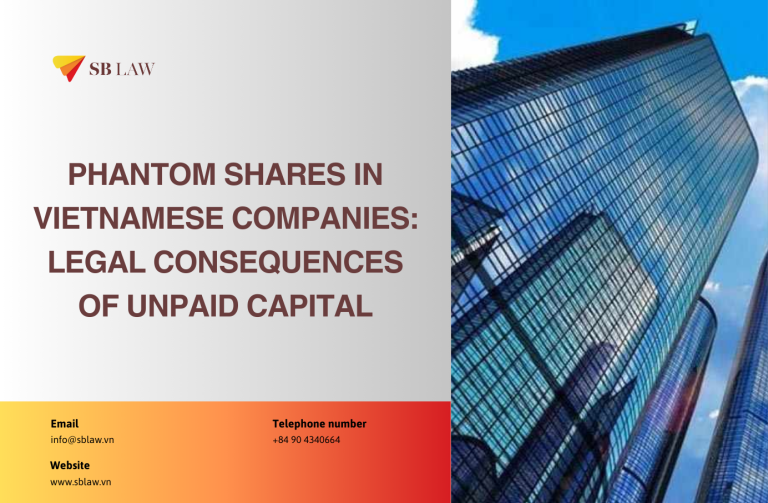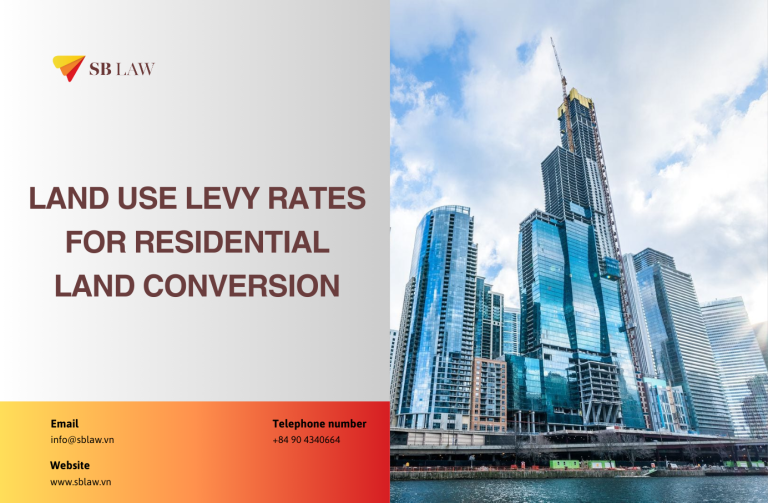In the 2016 - 2019 period, Vietnamese market witnessed series of cult M&A deals. The most prominence is the event that one of the largest transportation service providers in Southeast Asia - Grab acquired total shares of Uber in the Southeast Asian market. Thus, what does M&A mean? What are methods to identify an M&A deal?
What are crucial points in legal consultancy on M&A? The following article will clarify the aforesaid inquiries.
Research on M&A
Before indentifying an M&A deal, it is necessary to comprehend the terminology of M&A. M&A stands for two English terms Mergers and Acquisitions. M&A transaction is an activity of obtaining the control over an enterprise via the form of merger or acquisition of a portion (a number of shares) or the whole target enterprise. The purpose of an M&A transaction is not solely to own shares but to participate in and decide on crucial issues having impact on business operation and governance of the merged/acquired enterprise.
Merger is an association among enterprises of the same size and subsequently form a new legal entity. All assets, common interests, rights or obligations of the merged or acquired enterprise shall "belong to" the merging enterprise.
Acquisition is the form in which a large enterprise acquires smaller and weaker enterprises and the acquiring enterprise retains its former legal entity. Acquiring enterprise has the legal ownership right to the acquired enterprises.
Legal consultancy on M&A
From the perspective of a solicitor, upon providing clients with legal consultancy on M&A, it is necessary to concentrate on the following issues:
First of all, with respect to the target of M&A:
Upon consulting to orientate the target of M&A transaction, we shall mainly revolve 04 targets as follows:
Orientating towards the right to hold shares/capital contributions (For instance: investment funds invest in an enterprise for the purpose of holding shares, getting benefit from the enterprise’s development);
Orientating towards holding the right of businesses of the enterprise, specifically conducting the acquisition of a licensed enterprise which has been conducting business activities in relation to the business model that the acquiring enterprise takes an interest in;
Orientating towards the properties
For example: Real estate, project ... (Such target enterprise owns a real estate located in position that the acquiring enterprise takes an interest in, or the acquiring enterprise shall conduct M&A transaction to own property which is non-transferable real estate, ...);
Intellectual Property - peculiar subject
Intellectual property right in the age of digital economy plays a very important role and can determine the development of a certain industry or enterprise. Holding intellectual property right is generally orientated towards two targets:
+ Upon having a vision on the potential of its development, continuing building and promoting this brand via M&A;
+ Eliminating competitors on the market.
Secondly, concerning the subject of target
Based on the stated target, the parties will continue to identify the subject of target, for instance, in case the subject is a non-transferable asset, the acquiring enterprise acquires shares of the enterprise owning that asset, thereby indirectly owning this asset. We can have conclusion that the subjects of target in M&A include the following basic types:
- Share, contributed capital in enterprise (upon wishing to hold shares in an enterprise);
- Business license (via acquiring shares, contributed capital);
- Assets, projects ... (which is eligible for transfer);
- Intellectual property right in case of having been registered and disclared (via transferring intellectual property rights);
- Project (which is eligible for transfer).
Thirdly, with regard to the structure of transaction:
The structure of transaction is designed after the subject of target is identified. The options for the structure of M&A transactions include: Acquisition; consolidation; merger; division and separation of enterprises. In addition, other simpler forms include: Receiving transfer of projects, assets; Transferring rights and obligations in contracts; ...
From the initial target, the structure of transaction will be determined according to the demand of parties.
Fourthly, regarding valuation
Valuation in M&A is momentary, this may cause risks and difficulties for transactions in case solicitors have no insight on the market value of the target subject. For example, upon paying attention to the shares of an enterprise, the crucial point here is the turnover, profit, business status of that enterprise or upon being interested in an investment project, the acquiring enterprise should consider the break-even point of that project as the most dominant issue.
To ensure the transparency and accuracy of financial statements and data of investment projects, the consultancy and review from financial advisors is very essential. Moreover, regarding the business license, it is so important to consider its benefits, investment expenses as well as market value.
Fifthly, in respect of the pricing structure
The pricing structure depends much on the target, subject of M&A. Upon orientating towards business license, investors will not pay much attention to the value of enterprise. In the event of the target subject is business license, the pricing structure is divided into two categories: (i) Basic price (the value of this license), also known as the fixed price; (ii) Actual asset value of enterprise at the time of transferring from the acquired party to the acquiring party.
In the event of the target subject is shares, assets, investor should take notice of the value of that asset and enterprise.
Sixthly, as regards negotiation on price
There must be a price for negotiation (initial preliminary price) as a basis for the parties’ negotiation. Next, the parties shall enter into a memorandum of understanding as a basis. The parties shall conduct the in-depth due diligence (preliminary assessment on risks in relation to assets, transactions, structure and subject of transaction, thereby implementing adjustments if any risks arise ...).
After the in-depth due diligence, the parties continue negotiating to re-determine the value, M&A contract is entered into in case there is no issue arising and existing among the parties.
After the parties fulfill all conditions of payment and transferring in accordance with the laws, M&A transaction is considered to be done.
Solicitor should concentrate on the following matter:
For the acquired party, it is necessary to conduct a legal and financial due diligence on financial issues of the enterprise.
For instance: Regarding the valuation of an enterprise value, it is very essential to consider its debts, revenues and expenditures as well as ability of debt collection.
In addition, it is necessary to define existing contracts engaging with the third parties to acknowledge that there is no dispute or if any risk of disputes may arise.
For the acquiring party, it is necessary to focus on the initial target:
In the event of the target subject is asset, please consider the legitimacy of such possession of that asset.
In the event of the target subject is business license, please consider the legitimacy of that business license, conditions for the ownership of this business license. Moreover, there should be an assessment on the enterprise’s human resources.
Therefore, the parties involved in the M&A transaction should pay attention to legal issues as follows:
- Conditions for establishment and operation of enterprise;
- Property ownership right;
- Business license, enterprise registration certificate and investment registration certificate;
- Employees as well as human resources of enterprise at the time of M&A transaction;
- The existing disputes that enterprise is encountering (generally depending much on the honesty of the acquired party). The acquiring party's solicitor shall acknowledge and review on the basis of the existing contracts to determine if risks may arise;
- Cooperation with the finance party to review the source of revenues, financial statements of enterprise.
- Subjects mainly involved in an M&A transaction
In addition to two main subjects which are the acquiring party and the acquired party in M&A deal, depending on the structure of transaction, many other subjects may involve such as:
- Competition management agency: Always participate in major M&A transactions in order to examine whether these transactions breach the law on competition or not?
- Relevant shareholders, capital contributors
Example 1: For a limited liability company, regarding the purchase of contributed capital, there must be offers to existing members in advance.
Example 2: Relevant shareholders in a joint stock company own contributed capital.
Common risks in M&A transactions
Solicitors should consider risks may arise in an M&A deal, in particular:
- The acquired party inflate the enterprise value, turnover, profit... affecting the process of enterprise valuation.
- The structure of M&A transaction is inconsonant, lawful dossiers are insufficient to conduct the transaction.
- The parties can not assess the involved risks in full, which leads to loss or failure in the transaction process.
- M&A transaction for the purpose of money laundering arising from a foreign investor or for other purposes or aimed at concealing another transaction… Regarding these kinds of transaction, its investment registration certificate may be withdrawn in case of failure to prove its transparency.
- Failure to assess risks related to potential disputes. For example: labor disputes after an M&A transaction.
Upon participating in M&A transactions, Vietnamese enterprises have opportunities to approach, associate and cooperate with foreign enterprises. M&A results in remarkable changes in business management and operation of the involved parties. Therefore, M&A is an activity in need of participation and consultancy of many experts with professional and in-dept experience in different practices such as law, branding, finance,...
Please see more:




